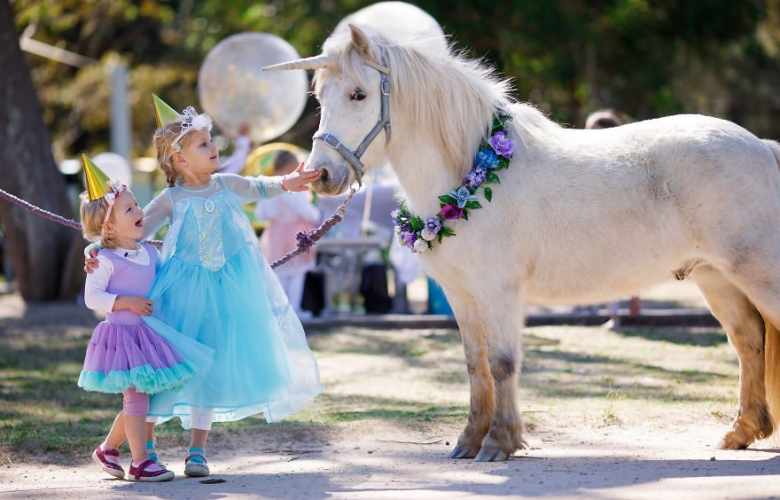Did you know that most unicorns do not need food to survive, making it much easier to survive in almost any environment on the earth? One of the most mystical ways unicorns stay invigorated is by absorbing energy from the Sun through their horn. While unicorns do not need food, they enjoy eating. Unicorns live for hundreds of years; they live in small familial hurds. These small groups consist of four to five members; this can be a family with parents and their foals. Grown-up unicorns can form a group of unicorns.
And since at their top speed unicorns can reach the speed of sound, it’s not hard to believe that unicorns can be found across the world. That being said, unicorns prefer certain types of locations and environments over others. Many unicorns live in forests, where there is plenty of natural serene organic energy as well as food such as berries, certain grasses, and fruits to eat. The trees offer shelter from the wind and the rain, offer protection and help hide them in the shadows. It goes without say that unicorns have a deep and innate connection with nature.
The magnificent, deciduous forests in Central and Western Europe and North America are natural homes for unicorns. These natural habitats have been around for thousands of years, if not longer. Unicorns also live in the taiga area of Northern Europe and North America. Taiga is commonly called the boreal forest or snow forest, an environment populated by coniferous forests consisting mainly of pines, spruces, and larches; the forest has been called the world’s largest land biome.
Quiet mountainous zones, especially those with waterfalls, are widespread habitats for unicorns because unicorns love waterfalls! Falling water is an excellent source of power, and unicorns are typically born near waterfalls. Waterfalls often create rainbow portals to other dimensions, which also attract unicorns.
While mountains do not offer much shade, they do provide the perfect peace and tranquillity desired for rest and transformation, and these magical creatures can find harmony on mountain peaks. And since mountains are often associated with spirituality, many mountains are considered sacred; the spiritual energy of mountains is alluring to unicorns, as they are very spiritual creatures.
Large meadows are known to appeal to unicorns. In meadows, unicorns can find long ancient grasses, regional wildflowers, and tasty meadow blossoms. Fields also offer some shade, and unicorns often sleep in them.
When a young maiden encountered a unicorn in the Middle Ages, this often happened in a beautiful meadow on a sunny day.
Alpine meadows combine two environments unicorns like:
- Mountain ranges, and
- Alpine meadows
Including the Central European Alps, the Himalayas in India and Nepal and the Andes in South America.
Where can you go to see a Unicorn?
Here are the top places to spot unicorns:
- Scotland is known to have the highest unicorn population in the world. The unicorn is the national animal of Scotland. And Scotland is one of the most unicorn-friendly regions globally with its’ highlands, beautiful mountains, hills, lochs, woodlands, and beaches. Remember that April 9th is National Unicorn Day in Scotland.
- The UK’s royal coat of arms shows a lion representing England and a unicorn symbolizing Scotland; the combination dates back to 1603.
The most renowned mountain environment in the world for unicorns is the Harz mountains in Germany.
You can also visit www.findingunicorns.com.au to see all sorts of unicorns.
The German Steingrotte Legend of the Unicorn Cave
There is a German folktale about a cave known as the unicorn cave. This Steingrotte is the same cave where the “unicorn skeleton” was discovered in the 17th century. As the folktale has it, a mystical older woman lived in the cave. The woman was a healer and fortune-teller. She helped many people who travelled long distances to meet her. When soldiers attempted to approach the old woman, a unicorn appeared from the forest and carried the woman to safety.
The Himalayas have always been home to unicorns. The unicorn legend might have started on these sacred mountains. Unicorns can also be observed living on the Alpine meadows lining the Himalayas.
Unicorns Prefer Quiet Undisturbed Natural Surroundings
As long as unspoiled natural lands remain part of the natural history of the world that occupies humanity’s attention, there will most probably continue to propagate many insights and understandings around where unicorns still exist to reward the activity of future inquirers.
It is very plausible that the unexplored regions across the African Continent, the Americas, and New Holland, may contain many different versions of the classic unicorn entirely unknown to us at present. Or species of unicorns known only by their fossil remains discovered under several sediment layers of the earth. There is little doubt that the unicorn still thrives throughout parts of Africa not far north of the Cape of Good Hope. And perhaps, at some distant time, it may be as well known that unicorns only exist to those of us you believe in them as the elephant, the dolphins or the hippopotamus is at present.
Hello, I am a professional writer, with more than 10 years of writing experience. I love to write on the science related subjects and share knowledge with my readers. I hope all my reader friends will enjoy my work.

